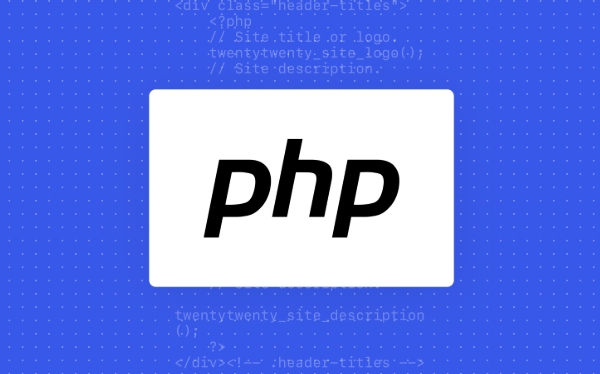 Backend Development
Backend Development
 PHP Tutorial
PHP Tutorial
 The Nuances of `isset()`, `empty()`, and `is_null()` for Variable Validation
The Nuances of `isset()`, `empty()`, and `is_null()` for Variable Validation
The Nuances of `isset()`, `empty()`, and `is_null()` for Variable Validation
Jul 24, 2025 pm 10:15 PMisset() checks if a variable is declared and not null, returning true for empty strings, 0, '0', false, and empty arrays; use it to confirm a variable exists and has been set, such as verifying form inputs like $_POST['email']. 2. empty() determines if a value is "empty" in a user-logic sense, returning true for '', 0, '0', null, false, [], and 0.0, and is safe for undefined variables; use it when treating '0' or 0 as invalid or not provided, such as in optional user input fields. 3. is_null() strictly returns true only if a variable exists and is explicitly null, but it misleadingly returns true for undefined variables due to PHP's behavior; use it only when the variable is guaranteed to exist and you need to distinguish null from other falsy values. To safely check for undefined or null, combine with isset(): if (!isset($var) || $var === null), and for strict null checks, use if (isset($var) && $var === null).

When validating variables in PHP, isset(), empty(), and is_null() are commonly used—but they behave differently and are often misunderstood. Choosing the wrong one can lead to unexpected results, especially when dealing with user input, form data, or API responses. Let’s break down the nuances so you know exactly when to use each.

1. What isset() Really Checks
isset() determines whether a variable is declared and not null.
$var = null; echo isset($var) ? 'Yes' : 'No'; // Outputs: No $var = ''; echo isset($var) ? 'Yes' : 'No'; // Outputs: Yes
- Returns
falseif:- The variable doesn’t exist.
- The variable exists but is assigned
null.
- Returns
truefor empty strings,0,'0',false, arrays with no elements—anything exceptnullor undefined.
? Use isset() when you want to know if a variable has been set and has a meaningful value (even if that value is logically "empty").

Common use case: Checking if
$_POST['email']was sent in a form.
2. How empty() Interprets "Empty"
empty() returns true if a variable is considered "empty" in a loose, user-logic sense.

These values all return true for empty():
''(empty string)0'0'nullfalse[](empty array)0.0
var_dump(empty('0')); // true — often surprising!
var_dump(empty([])); // true
var_dump(empty(null)); // true? Use empty() when you're checking user input where values like '0' or 0 should be treated as "not provided" or "invalid."
Note:
empty()does not generate a warning if the variable doesn't exist—unlike using the variable directly. So it's safe for undefined vars.
3. When to Use is_null()
is_null() is strict: it only returns true if the variable exists and is explicitly null.
$var; var_dump(is_null($var)); // true (implicit null) $var = null; var_dump(is_null($var)); // true $var = ''; var_dump(is_null($var)); // false
But:
var_dump(is_null($undefined)); // true — even if undefined!
Wait—yes, is_null() returns true for undefined variables because PHP passes null by default when a variable doesn’t exist.
?? So: is_null() is not safe for checking undefined variables unless you know they’re already declared.
? Use is_null() only when you’re certain the variable exists and you need to distinguish null from other falsy values.
Key Differences at a Glance
| Value | isset() | empty() | is_null() |
|---|---|---|---|
null | false | true | true |
'' | true | true | false |
'0' | true | true | false |
0 | true | true | false |
false | true | true | false |
[] | true | true | false |
| Undefined | false | true | true* |
*
is_null($undefined)returnstrue, but that’s misleading—because the variable doesn’t exist.
Best Practices & Recommendations
- ? Use
isset()to check if a variable (like$_GET['id']) was provided. - ? Use
empty()for user input where'0'or0should be treated as missing (e.g., optional fields). - ? Avoid
is_null()unless you’re in a context where the variable is guaranteed to exist. - ? For strict checks, combine tools:
if (isset($var) && $var === null) { /* explicitly null */ } - ?? To safely check undefined or null:
if (!isset($var) || $var === null) { /* not set or null */ }
Basically, the choice depends on what you’re trying to validate: existence, usability, or strict nullity. Mixing them up leads to bugs—especially when
'0'is valid data (like a zero rating). Know the difference, and test edge cases.The above is the detailed content of The Nuances of `isset()`, `empty()`, and `is_null()` for Variable Validation. For more information, please follow other related articles on the PHP Chinese website!

Hot AI Tools

Undress AI Tool
Undress images for free

Undresser.AI Undress
AI-powered app for creating realistic nude photos

AI Clothes Remover
Online AI tool for removing clothes from photos.

Clothoff.io
AI clothes remover

Video Face Swap
Swap faces in any video effortlessly with our completely free AI face swap tool!

Hot Article

Hot Tools

Notepad++7.3.1
Easy-to-use and free code editor

SublimeText3 Chinese version
Chinese version, very easy to use

Zend Studio 13.0.1
Powerful PHP integrated development environment

Dreamweaver CS6
Visual web development tools

SublimeText3 Mac version
God-level code editing software (SublimeText3)

Hot Topics
 The Case Against the `global` Keyword: Strategies for Cleaner Code
Jul 25, 2025 am 11:36 AM
The Case Against the `global` Keyword: Strategies for Cleaner Code
Jul 25, 2025 am 11:36 AM
Avoidusingtheglobalkeywordunnecessarilyasitleadstocodethatishardertotest,debug,andmaintain;instead,usefunctionparametersandreturnvaluestopassdataexplicitly.2.Replaceglobalvariableswithpurefunctionsthatdependonlyontheirinputsandproduceoutputswithoutsi
 Passing Variables by Reference vs. By Value in Functions
Jul 26, 2025 am 09:49 AM
Passing Variables by Reference vs. By Value in Functions
Jul 26, 2025 am 09:49 AM
Passbyvaluemeansacopyofthedataispassed,sochangesinsidethefunctiondonotaffecttheoriginalvariable,asseeninCwithprimitivesorPythonwithimmutabletypes.2.Passbyreferencemeansthefunctionreceivesadirectreferencetotheoriginal,somodificationsinsidethefunctiona
 The Lifecycle of a PHP Variable: From Allocation to Garbage Collection
Jul 24, 2025 pm 10:49 PM
The Lifecycle of a PHP Variable: From Allocation to Garbage Collection
Jul 24, 2025 pm 10:49 PM
APHPvariable'slifecyclebeginswithmemoryallocationviazvalcreation,whichstoresthevalue,type,referencecount,andreferenceflag.2.Whenvariablesareassignedorshared,PHPusesreferencecountingandcopy-on-writetooptimizememoryusage,onlyduplicatingdatawhennecessar
 Modernizing Your Classes with PHP Typed Properties
Jul 26, 2025 am 09:49 AM
Modernizing Your Classes with PHP Typed Properties
Jul 26, 2025 am 09:49 AM
TypedpropertiesinPHP7.4 allowdirecttypedeclarationforclassproperties,improvingreliability,IDEsupport,andcodeclarity;2.Theyenforcetypesafety,reducebugs,enablebetterautocompletion,andminimizeconstructorchecks;3.Tomigrate,useexisting@vardocblockstoaddty
 Demystifying PHP's Variable Variables (`$$var`)
Jul 25, 2025 am 04:42 AM
Demystifying PHP's Variable Variables (`$$var`)
Jul 25, 2025 am 04:42 AM
Variable variables use the value of one variable as the name of another variable through the $$var syntax; 2. For example, when $myVar is "hello", $$myVar is equivalent to $hello and can be assigned a value; 3. In practical applications, it can be used to dynamically process form data, such as traversing $_POST with foreach and creating corresponding variables with $$key; 4. There are problems such as poor readability, high security risks, and disrupting static analysis, especially avoiding the use of $$ for user input; 5. It is recommended to use arrays or objects instead of creating dynamic variables, such as storing data into $data array instead of creating dynamic variables; 6. Using ${$var} curly brace syntax can improve code clarity, especially in complex scenarios. Variable change
 A Deep Dive into PHP Superglobals: Beyond `$_GET` and `$_POST`
Jul 26, 2025 am 09:41 AM
A Deep Dive into PHP Superglobals: Beyond `$_GET` and `$_POST`
Jul 26, 2025 am 09:41 AM
PHPsuperglobalsinclude$_GET,$_POST,$_REQUEST,$_SESSION,$_COOKIE,$_SERVER,$_FILES,$_ENV,and$GLOBALS,eachservingdistinctpurposesbeyondjusthandlingformdata;theyenablestatemanagement,serverinteraction,andenvironmentaccess.1.$_REQUESTcombines$_GET,$_POST,
 PHP Constants vs. Variables: A Guide to Immutability
Jul 25, 2025 pm 05:37 PM
PHP Constants vs. Variables: A Guide to Immutability
Jul 25, 2025 pm 05:37 PM
Constantscannotbechangedafterdefinition,whilevariablescan;1.Variablesstartwith$,aremutable,scoped,andidealfordynamicdata;2.Constantsusedefine()orconst,haveno$,areimmutable,globallyscoped,andbestforfixedvalueslikeconfiguration;3.Useconstantsforunchang
 The Nuances of `isset()`, `empty()`, and `is_null()` for Variable Validation
Jul 24, 2025 pm 10:15 PM
The Nuances of `isset()`, `empty()`, and `is_null()` for Variable Validation
Jul 24, 2025 pm 10:15 PM
isset()checksifavariableisdeclaredandnotnull,returningtrueforemptystrings,0,'0',false,andemptyarrays;useittoconfirmavariableexistsandhasbeenset,suchasverifyingforminputslike$_POST['email'].2.empty()determinesifavalueis"empty"inauser-logicse





